- News
- Reviews
- Bikes
- Accessories
- Accessories - misc
- Computer mounts
- Bags
- Bar ends
- Bike bags & cases
- Bottle cages
- Bottles
- Cameras
- Car racks
- Child seats
- Computers
- Glasses
- GPS units
- Helmets
- Lights - front
- Lights - rear
- Lights - sets
- Locks
- Mirrors
- Mudguards
- Racks
- Pumps & CO2 inflators
- Puncture kits
- Reflectives
- Smart watches
- Stands and racks
- Trailers
- Clothing
- Components
- Bar tape & grips
- Bottom brackets
- Brake & gear cables
- Brake & STI levers
- Brake pads & spares
- Brakes
- Cassettes & freewheels
- Chains
- Chainsets & chainrings
- Derailleurs - front
- Derailleurs - rear
- Forks
- Gear levers & shifters
- Groupsets
- Handlebars & extensions
- Headsets
- Hubs
- Inner tubes
- Pedals
- Quick releases & skewers
- Saddles
- Seatposts
- Stems
- Wheels
- Tyres
- Health, fitness and nutrition
- Tools and workshop
- Miscellaneous
- Tubeless valves
- Buyers Guides
- Features
- Forum
- Recommends
- Podcast
news
Video of "busiest cycle path in the Netherlands" goes viral, where "private cars are not allowed"... and there's "no congestion"; Police Scotland called out for "incorrect" cycling advice; Magistrate resigns over 20mph speed limits + more on the live blog
SUMMARY
No Live Blog item found.
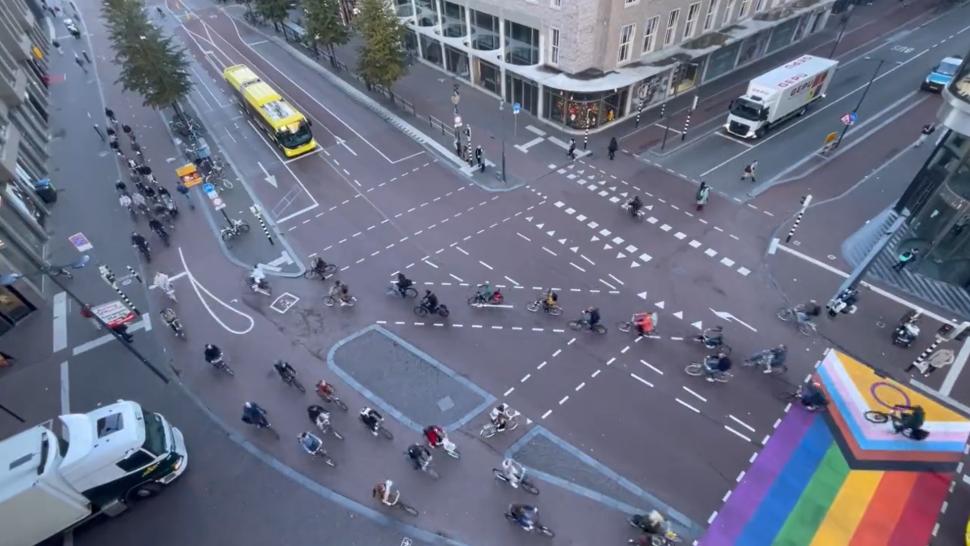 Utrecht cycle junction (screenshot video Dutch Cycling Embassy/Twitter)
Utrecht cycle junction (screenshot video Dutch Cycling Embassy/Twitter)25 October 2023, 15:24
Video of "busiest cycle path in the Netherlands" goes viral, where "private cars are not allowed"... and there's "no congestion"
As the busiest cycle path in the Netherlands, Utrecht's Vredenburg must be seen to be believed!
Private cars are not allowed.
📹Harri Vaarala pic.twitter.com/hVUsq4Fk39
— Dutch Cycling Embassy (@Cycling_Embassy) October 21, 2023
Would be fascinated to see some stats on cycle clothing, helmets etc... just people getting around town by a convenient mode of transport, no dramas...
We're not too sure on the numbers behind if it is the Netherlands' busiest cycle path, some think rivals in Amsterdam or Groningen might have something to say about that, but what we do know is this video has been viewed more than 100,000 times this week thanks to two posts by the Dutch Cycling Embassy (a great Twitter follow for admiring a country that does cycling properly) and city planner Brent Toderian.
It even prompted a close-up angle...
Indeed! From March this year. pic.twitter.com/2RjHYVR1ay
— TallBikeGuy (@theTallBikeGuy) October 21, 2023
And the 21-hour timelapse (if you've got plenty of viewing time on your hands)...
I filmed a 21 hour long timelapse of this junction earlier this year https://t.co/EwoSXzqeU0
— Hackney Cyclist (@Hackneycyclist) October 21, 2023
And as Debbie MacColl commented in reply, "Just imagine if all those people were in a car rather than a bike. It would be just like a UK city or town."
25 October 2023, 15:17
BIG Zwift update! Watch our first ride on 19km of new roads in Watopia
25 October 2023, 15:09
The Italian Job? Turin to give Mark Cavendish the first of eight record-breaking chances at 2024 Tour de France (+ video of route)
25 October 2023, 13:44
Conservation group's fear plan to surface path for wheelchair access will create "hostile environment" and "encourage faster cyclists"
A conservation group dedicated to protecting and supporting The Parkland Walk, the longest linear nature reserve in London, four kilometres between Muswell Hill and Finsbury Park, has expressed concerns about a Haringey Council consultation about resurfacing the off-road route with a hard surface to improve accessibility.
The Friends of Parkland Walk group says the "overwhelming majority" do not want the path, the chair Cathy Meeus warning that "all it will do is encourage faster cyclists", Ham & High reports.
"They'll make it accessible for one small group of vulnerable people but make it a hostile environment for young people, old people who are less mobile, dog walkers, the visually impaired and deaf community," she said.
"Will they honour the consultation and not make changes? We want the council to remember this is an official nature reserve, not a cycle route."
The group's website also warns that "a smooth path will facilitate high-speed cycling" that "could become considerably worse as e-bikes become more common".
At the consultation stage the council said there had been "misinformation and scaremongering" around the project, stressing it is an "absolute fundamental" that the surfacing will not create a 'cycle superhighway'.
However, the conservation group points to Sustrans' involvement, as one of four organisations invited to help manage the project, as a further problem sparking cycle route fears.
In reply, the council said Sustrans is "suitably qualified" and that "the council will follow this project through to its conclusion, which will be to agree a suitable resurfacing material and identify accessibility improvements in line with the co-production process that we have started."
"At this point, there is a blank canvas that will be developed, based on local community input and involvement," the council stated.
25 October 2023, 13:11
"I'm not going to do it": Magistrate steps down... would rather quit than enforce 20mph speed limits
A magistrate in Wrexham has resigned, saying he feels "uneasy" about fining drivers and handing out penalty points for speeding offences in new 20mph zones.
The BBC reports former police officer and councillor Nick Colbourne quit after 18 years in the role, questioning the fairness of the speed limits, claiming that "if an idiot is going to drive through somewhere at 60mph, they're going to do it whether the speed limit is 20 or 30".
Apparently missing the fact that not all road incidents are caused by 60mph "idiots", but also by people travelling at the speed limit who will abide with the new limits, Mr Colbourne said punishing motorists made him "uneasy".
"If you get 12 points, you're looking at a six-month ban under the totting up scheme," he said. "We all accept 20mph outside schools, but I don't think blanket coverage across Wales was the answer."
The magistrate admitted that he had been considering stepping down, but 20mph speed limits were the final straw and that courts were sometimes facing 60-70 motoring cases a day.
25 October 2023, 11:53
Will you ride L'Etape in 2024?
It's Tour de France route announcement day! Simon will have something up on that shortly, but as a teaser here's L'Etape's route for 2024...
You were impatiently waiting for it, here it is: the profile of #LEtapeduTour 2024! 🔥 The 32nd edition will take place on July 7th 2024 in the hinterland of Nice 🚵♂️
And we are already extremely excited to get there 🥰 pic.twitter.com/du7Ti95GaM— L'Étape du Tour de France (@letapedutour) October 25, 2023
Perhaps the biggest one-day sportive in the world, thousands of riders will take on this full stage of the Tour de France a few weeks before the pros. Stage 20 has been picked this year. Not the final stage before Paris because as we've all heard by now... the race isn't finishing in the French capital because of the Olympics and will end in Nice (with a time trial) instead. This quadruple ascent monster will be the final mountain stage and has been picked for L'Etape.
But have they picked the wrong stage?
I wish the Etape could have used stage 19.
— Simon Warren (@100Climbs) October 25, 2023
'What's stage 19?' I hear you cry... just the small matter of this...
Etape 19 / Stage 19 - #TDF2024
🚩 Embrun - @Isola2000_06 🏁 145 km🤩 The ultimate giant is back on the Tour: the Cime de la Bonette and its 𝟐.𝟖𝟎𝟐 m of altitude!
🤩 Le géant ultime fait son retour sur le Tour : la Cime de la Bonette et ses 𝟐.𝟖𝟎𝟐 m d'altitude ! pic.twitter.com/PqnLUjsnO2
— Tour de France™ (@LeTour) October 25, 2023
Registration opens next Tuesday (31 October) at 4pm.
25 October 2023, 11:27
Study: One quarter of crashes on US roads linked to phone misuse
[CC BY 2.0 by DPP Law/ Flickr]
New analysis of mobile phone data, reported by Bicycle Network and undertaken by mobile phone and GPS monitoring company Zendrive, concluded that more than one quarter of crashes on US roads are linked to phone misuse. The website also reports that number has risen by nine per cent compared with the same period in the previous year.
"We examined the number of phone use occurrences per trip for both collision and non-collision trips. The data revealed that, on average, drivers engaged in phone use about six times during a collision trip," Zendrive explained.
"Almost half of the drivers (45.8 per cent) involved in collisions used their phones at least once during their trip. Similarly, over 40 per cent of collision trips per month had rapid acceleration events, while all events – speeding, rapid acceleration, and phone use – are trending upwards month over month.
"These worsening behaviours are ultimately leading to more collisions, which further underscores the severity of the distracted driving epidemic."
Between January and May 2022, 19.2 per cent of collisions involved mobile phone use by the driver in the 15-second window before the crash. This year, that figure had risen to 28.4 per cent.
"Education and advocacy campaigns should continue to highlight the importance of safe driving practices, encouraging drivers to put their phones away while on the road," Zendrive said. "Additionally, tech companies and insurers can play a vital role in curbing distracted driving by implementing features that discourage phone usage while driving."
25 October 2023, 11:09
Bike industry turmoil: Shimano says global cycling market remains "weak" as segment sales fall by a quarter – and worse to come?
25 October 2023, 09:26
Less controversial? Demi Vollering wins the Women's Vélo d'Or
🇳🇱 Demi Vollering wins the Women's Vélo d'Or!👏
🇳🇱 @demivollering (@teamsdworx) remporte le Vélo d'Or Femmes ! 👏#velodor pic.twitter.com/IouRpQ2kjn
— L'ÉQUIPE (@lequipe) October 24, 2023
I think this one's going to be a bit more straightforward...
Demi Vollering's 2023 was about as good as it gets (some of these aside: From Coppi to Van Vleuten: Cycling's greatest ever seasons). The SD Worx superstar won *deep breath* Strade Bianche, Dwars door Vlaanderen, Amstel, Flèche Wallonne, Liège–Bastogne–Liège, two Vuelta stages (and may well have 'deserved' to have won that overall), the Dutch national champs road race, Tour de France Femmes and Romandie. Solid...
Vollering's teammate Lotte Kopecky's season wasn't bad either... Omloop Het Nieuwsblad, Flanders, two national championship titles, a Tour stage, six days in yellow, the green jersey, World Championships road race. Exceptional, but Vollering levels of exceptional?
It wouldn't be a cyclist of the year discussion without Annemiek van Vleuten of course, just La Vuelta and the Giro (plus two stage wins) in her final year in the peloton.
25 October 2023, 09:15
POLL: Best male cyclist of 2023?
Any complaints at Sepp Kuss' omission can be forwarded to the comments section...
25 October 2023, 08:45
Mathieu van der Poel? Tadej Pogačar? Questions asked as Vingegaard wins best male cyclist award for 2023
🇩🇰 Jonas Vingegaard wins the Men's Vélo d'Or!👏
🇩🇰 Jonas Vingegaard (@JumboVismaRoad) remporte le Vélo d'Or Hommes ! 👏#velodor pic.twitter.com/GGR2NwRfWm
— L'ÉQUIPE (@lequipe) October 24, 2023
Jonas Vingegaard the best male cyclist of 2023? This one has caused a fair bit of discussion... the more fan-friendly achievements and riding style of Tadej Pogačar and Mathieu van der Poel beaten by the dominant, crushing efficiency of the Tour de France winner.
I'd say Van der Poel's done more than enough in 2023 to earn the title: Milan–San Remo, Paris-Roubaix, World Championships, that's a titanic hat-trick, although admittedly facilitated by 'off' periods like at the Tour de France where we barely saw the watt-smashing Dutchman away from Jasper Philipsen's leadout.
[Alex Broadway/SWpix.com]
The case for Tadej Pogačar, the sheer weight of victories, 17 in all. Flanders, Amstel, Flèche Wallonne, Lombardia, two stages of the Tour, Paris-Nice, but he was of course beaten comprehensively by Vingegaard at the big one.
[LaPresse/RCS Sport]
In comparison, Vingegaard's 2023 had more victories than I expected, 16, including the Tour de France, Dauphiné, Itzulia Basque, a Tour stage win, two Vuelta stages, and multiple more week-long stage race stage victories.
[ASO/ Pauline Ballet]
A few thoughts from fans on L'Équipe's post...
"I like how everyone is saying Pogi because he won more one day races but when it came to racing Jonas straight up in by far the biggest season race over 21 straight stages he got destroyed by over seven minutes."
"MvdP and Pogacar had better season."
[Zac Williams/SWpix.com]
"The whole season should be taken into account, not just the Tour de France. But the fact that L'Équipe and the Tour are both French says it all." (TOUR DE FRANCE IS FRENCH SHOCKER... who knew?)
"Everyone knows that Jonas could have won two Grand Tours if he wanted to — so well deserved — but MvdP is a strong contender."
Get in the comments with your thoughts, I'm interested to see where you lot stand...
I might have to dust off the poll machine for this one...
25 October 2023, 08:37
"It is with a heavy heart that we inform the passing of Mark Groeneveld": 20-year-old pro cyclist dies after race
Mark Groeneveld, a 20-year-old pro cyclist from the Netherlands, died after the Hong Kong Cyclothon in the early hours of Monday, his team has announced. Groeneveld suffered a mechanical during the race, Noordhollands Dagblad reporting that he collapsed while out in public, Canadian XSpeed United saying the circumstances are "under investigation" but "preliminary information suggests it may have been due to a heart attack".
"Mark was an incredible individual and a cherished member of our team. He had a remarkable spirit, always ready to lend a hand behind the scenes with his infectious smile and warm-hearted nature," the team said in a tribute.
"His presence brightened our days, and he will be deeply missed by all who had the privilege to know him. Take care of yourselves and each other during this trying time. With heartfelt condolences, Mark will never be forgotten by us."
25 October 2023, 07:59
"The police don't know the Highway Code?": Police Scotland called out for "incorrect" and "contradictory" cycling advice
Anyone remember the days before social media? The days before weekly live blogs about police forces putting their foot in it. It's Police Scotland today. Or should I say last week, but this one has only just come to our attention, the fallout and reaction still rolling on to last night, so technically this week I guess.
Much-criticised social media advice from public authority that should know better, reveal yourself...
(5) Cyclists: Must obey all traffic signs and lights (including stop lines)
At night must have white front and red rear lights
Advised to use cycle lanes to make their journey safer
Give extra space between larger vehicles to be seen
Never pass between the vehicle and kerb— Road Policing Scotland (@PSOSRoads) October 18, 2023
It's the third and fifth points that are getting the most attention here (although it is also the prime time of year for telling vulnerable road users to 'be seen', rather than addressing the root cause of road danger, but that's a matter for another day)...
The last suggestion is not correct. Perhaps worth checking with legal?
— PhoneKills (@phonekills) October 24, 2023
So should a cyclist use this cycle lane or not, in your view? pic.twitter.com/YHLKdaAkwy
— closepassescardiff (@closepassescdf) October 24, 2023
So, what does the Highway Code actually say?
Rule 61:
Cycle Routes and Other Facilities. Cycle lanes are marked by a white line (which may be broken) along the carriageway (see Rule 140). Use facilities such as cycle lanes and tracks, advanced stop lines and toucan crossings (see Rules 62 and 73) where they make your journey safer and easier. This will depend on your experience and skills and the situation at the time. While such facilities are provided for reasons of safety, cyclists may exercise their judgement and are not obliged to use them.
Rule 67:
When cycling on the road, only pass to the left of large vehicles when they are stationary or slow moving and you should proceed with caution as the driver may not be able to see you. Be particularly careful on the approach to junctions or where a large vehicle could change lanes to the left.
Hmmm if you were hoping for a testing game of spot the difference I think you might be a bit disappointed...
Cycle lane use is optional & there are lots of situations where you shouldn't or cannot use them. We get enough "why aren't you in the cycle lane" nonsense without @PSOSRoads adding to the problem.
— Merton Cycling Campaign (@CyclingMerton) October 24, 2023
Dan is the road.cc news editor and joined in 2020 having previously written about nearly every other sport under the sun for the Express, and the weird and wonderful world of non-league football for The Non-League Paper. Dan has been at road.cc for four years and mainly writes news and tech articles as well as the occasional feature. He has hopefully kept you entertained on the live blog too.
Never fast enough to take things on the bike too seriously, when he's not working you'll find him exploring the south of England by two wheels at a leisurely weekend pace, or enjoying his favourite Scottish roads when visiting family. Sometimes he'll even load up the bags and ride up the whole way, he's a bit strange like that.
Latest Comments
- jamesha100 24 min 9 sec ago
I have been in Belfast for work this week and have been shocked by the congestion around the city centre. There are lots of frustrated drivers...
- David9694 46 min 19 sec ago
Cyclists should be made to have insurance etc https://www.thetelegraphandargus.co.uk/news/24757516.four-vehicles-seize...
- A V Lowe 1 hour 17 min ago
On a bus the driver has a fully glazed double set of doors that give a direct view of any cyclist or pedestrian travelling right into the left side...
- matthewn5 1 hour 43 min ago
A friend in my cycling club has a new Ribble Allroad, I think the model with 105, and when I asked how he was finding it (before reading this...
- Rendel Harris 1 hour 52 min ago
Well yes but that's if you're looking at an equation x = n x 3 where n is any number less than 5. If you're looking for a number that is three...
- check12 3 hours 10 min ago
Get them back? They've never gone away for me, cheap tdf winning bikes on eBay with rim brakes and cheap rim brake aero wheels, just don't tell...
- Simon E 3 hours 53 min ago
It used to be called Buy Nothing Day as a protest against the the Black Friday discounting madness. The constant BF adverts, promos and stuff...
- chrisonabike 6 hours 8 min ago
Apologies - you're quite right! Something about presentation and comprehension...
- wtjs 6 hours 29 min ago
You can find out whether they're lying about 'taking action' by asking them what they actually did. When they refuse to tell you, citing various...
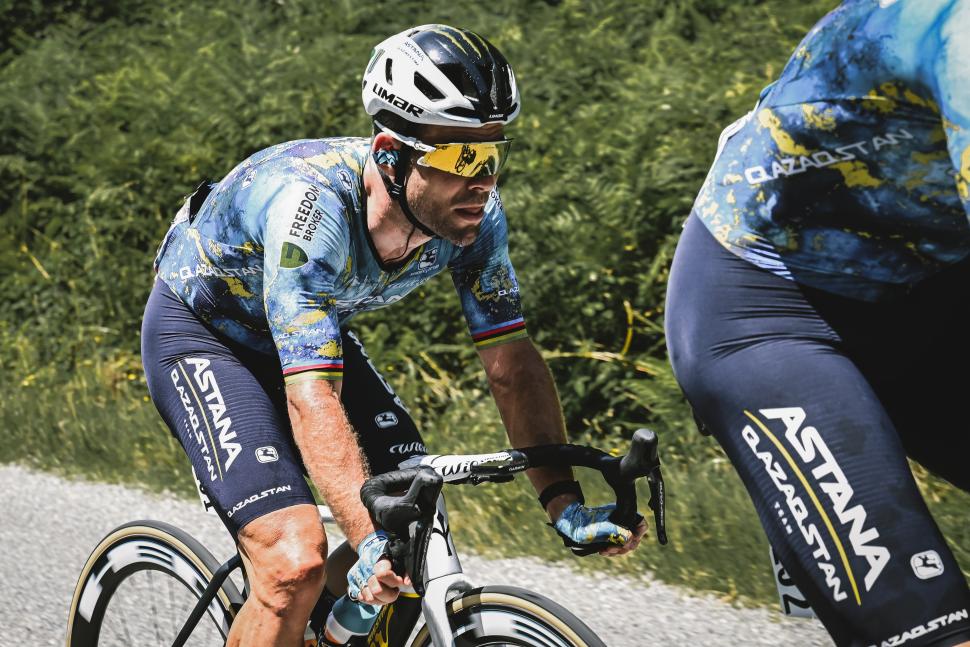
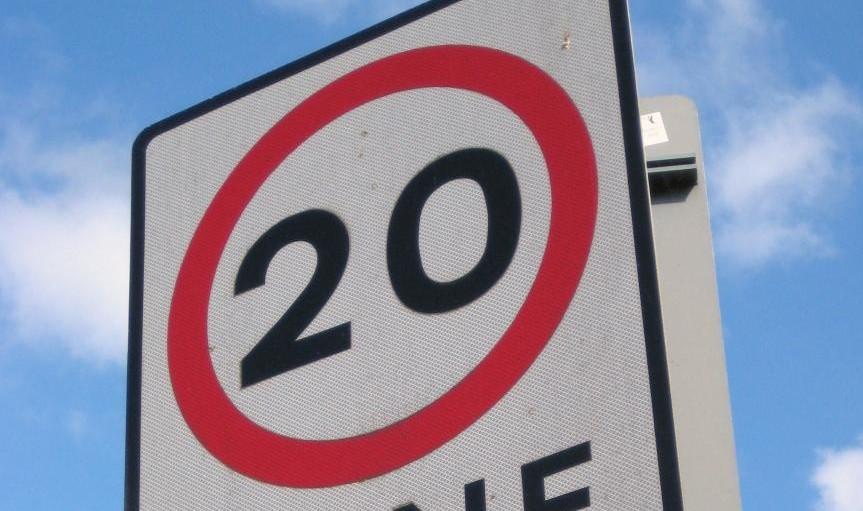
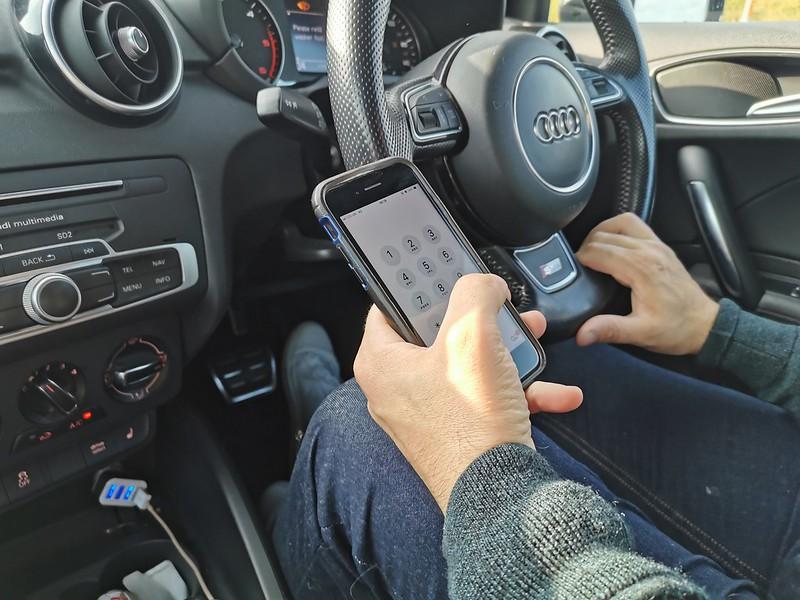
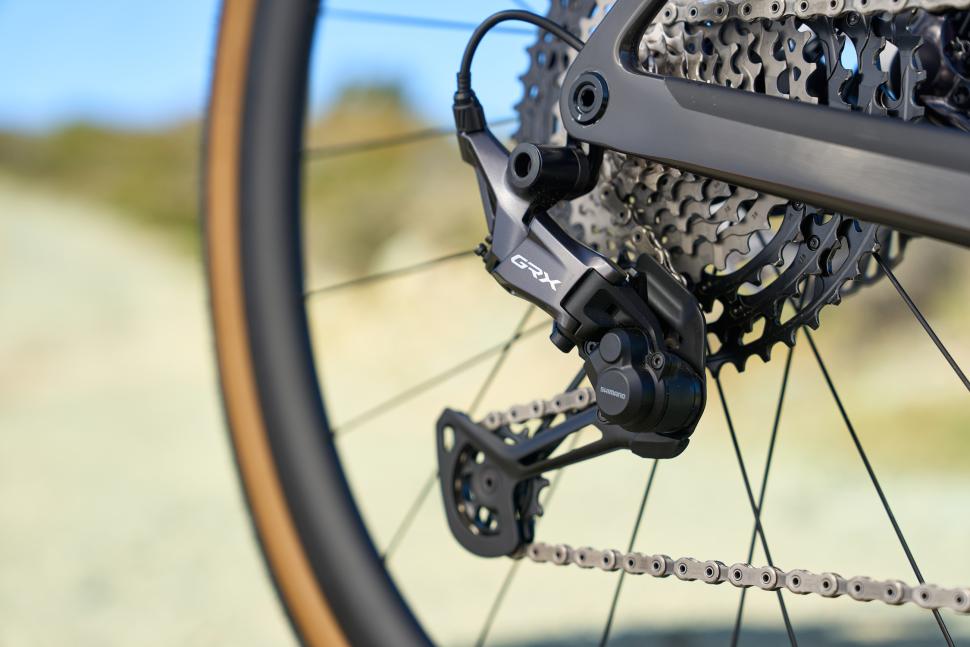
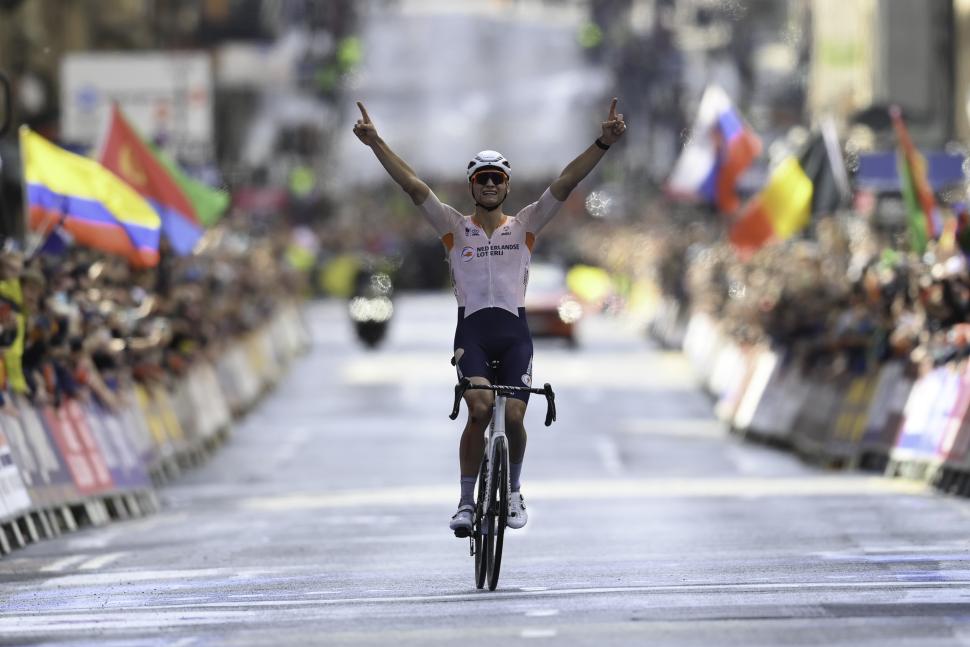
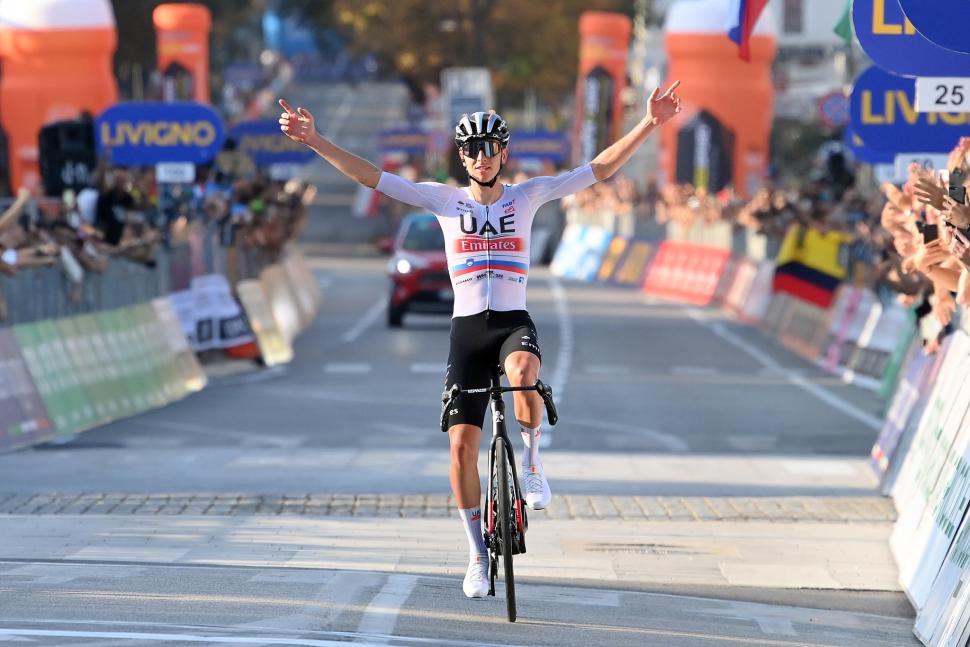

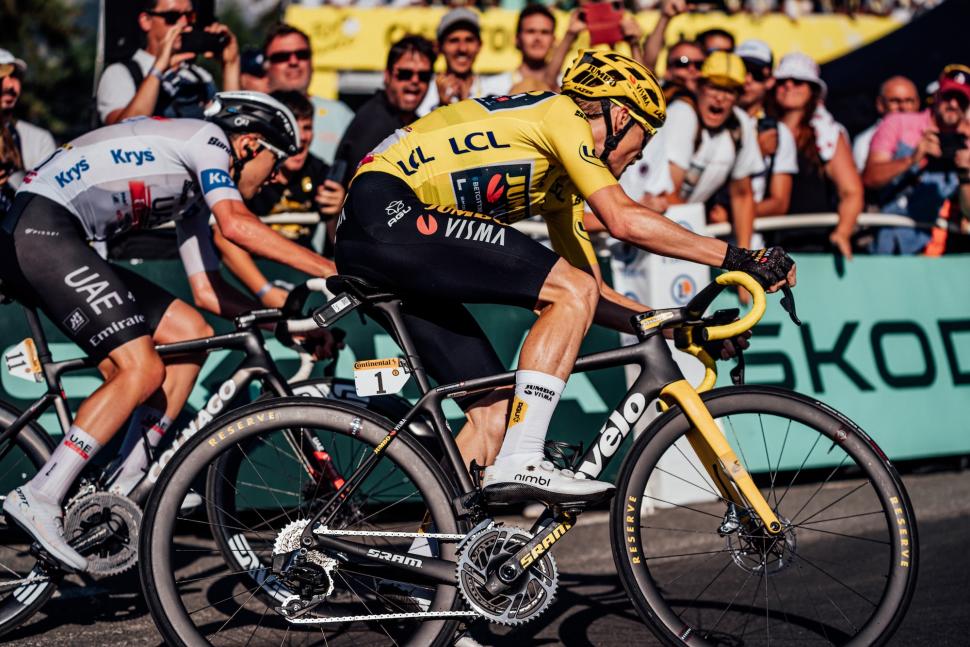
Add new comment
83 comments
The Netherlands "busiest cycle path": what I really like about it, is all the pedestrians mingling with the cyclists. They are all happily sharing the space. It is an inspiring thing to watch.
As my other reply to mitsky - the important detail is pedestrians and cyclists are "happily sharing the space" only briefly (where they cross). That works because both have their own clearly marked dedicated spaces e.g. cyclepath and footway.
Pedestrians can relax on the footway as they don't need to consider cyclists at all there. They won't have people ringing their bells or weaving around and past them. When they want to cross the street they know where to expect cyclists (the cycle path). They also don't need to look out for cyclists filtering either side of motor vehicles on the main carriageway.
In turn cyclists don't need to keep slowing for groups of pedestrians (walking 2 abreast! or more!) or dogs etc. They only have to watch for crossing pedestrians - and those know to expect cyclists in a cycle path so are more likely to look! It doesn't involve coming to a stop for people to cross either - just a small adjustment of your speed.
There's an article and video on this very space from BicycleDutch here.
In fact - this place has so many cyclists that the city is looking at ways of improving other cycle access so less people are concentrated on one route.
I'm surprised by how little cycle traffic there is. The busiest cycle path here is Paris is far busier and bit of a nightmare to be honest. At rush hour you can expect to queue for 2 or 3 changes of lights to get through each junction and there is a constant risk of getting hit by a bicycle coming the other way on the bidirectional path. To be fair it was built just before COVID. They are planning on changing it, hopefully it will be a bit like the one in the video
I suspect that the NL example may have greater numbers but look "less busy" because the Dutch system is very efficient and (same as we expect from roads) runs everywhere. They also try to avoid traffic lights for cyclists or manage the timing of these so there are fewer bottlenecks or delays [1] [2] [3].
Interestingly Utrecht decided that there were too many people cycling on this route and are looking at ways of improving connections elsewhere to avoid funnelling so many people into this one space...
Dunno numbers for the Paris one - do you have any info on that? I know almost nothing about the detail of developments in Paris (NotJustBikes and a couple of other bloggers / articles) and while the overall numbers sound very impressive in the UK (15% of trips cycled, a couple of years back) it appears it's definitely "early days" with the usual teething troubles (and here) of course.
PS Often when there are issues it's most effective to look at the "big picture" e.g. the whole network. There's an article about Utrecht addressing long waits at a cycle crossing by altering the bus routes.
There are also some interesting more localised "hacks" that have been applied to places with high maximum flow of cyclists in NL. For speeding up crossing roads at signalised crossings two come to mind:
All-ways-green phase for cyclists (this is not really a hack, think it's pretty well established / tested)
Utilising people's natural "bunching" behaviour when waiting at crossing points (not sure there's an "official" name for this - maybe "tapered crossing?")
I think that is because Paris is doing it all in a confused rush; London by comparison is far more strategic.
Perhaps it's actually the opposite? Again I'm not hot on the details but it seems Paris is actually trying to make it happen at scale, and make it work by building *networks*. In London (possibly with the exception of the original superhypeway concept) I suspect it's less a deliberate "strategic" slow pace but more the usual "we put one in here for a couple of miles, because we could". Followed by an indefinite wait until someone has a bright idea about another scheme.
London has the issue of the different boroughs having more autonomy and is much bigger than Paris of course. And there are boroughs which appear to be taking this on themselves - Hackney?
Still - "What do we want? Gradual change. When do we want it? In due course..."
Yes.
From accounts I have read from recent visitors to Paris, it is very very good ... then you fall of the edge of the new cyclnig infra and it is like former Paris.
Perhaps that is an artefact of any transition process?
Re: the busiest junction footage.
Love the bit at the 26 second mark where someone just calmly walks through the middle of the junction with no fear.
How many people would do the same if it was a normal junction anywhere else full of motor traffic...?
That'll teach me to refresh the page more often!
Yes - obviously agree
Yep. Something which many people (especially in the UK) don't know they don't know is that not only are cycles not like cars, but pedestrians can interact with cyclists in a different way than they do with cars.
So by having actual cycle infra (where there are lots of cyclists) compared to a road the width of space that pedestrians need to traverse to is shorter. That, and the lower speeds, greater manoeuverability and possibilities for easier communication means that you don't need traffic lights and formal pedestrian crossings in almost every case. (Probably this Utrecht street is one of the few in NL that might warrant a marked crossing).
We've probably got a few generations of finding our way there from where we are in the UK (if we actually go in this direction...) but here's how it can work.
Note: I'm not saying that mixing pedestrians and cyclists on a shared use path is a good thing. It's not, because they're not convenient for anyone in most cases. Only suitable where there are very few of either mode. (Probably that's why we like 'em in the UK - there's no intent to increase the number cycling and pedestrians are a secondary concern to those in cars anyway...)
Shared routes can be fine; it depends entirely on the ped / cycle traffic mix and volume, and the specificiton of the path.
The issue is when a Council declared a narrow (eg 1-1.3m) footway to be "shared" because they do not want to do it professionally.
Hmm... well I obviously agree that local authorities in the UK reach for this to "magically" make cycling provision on the cheap without needing to build anything. And that actually sets back active travel.
"Yes" they can be OK technically - in that traffic mix and volume is indeed critical. Hence the usual Dutch solution to "routes for non-motorised traffic in the countryside" is effectively a shared-use path. However (this sounds irrelevant but I think it's important) it's not actually to build a "shared use path" or a "footway that cyclists can use". It's the opposite - build a cycle path only. It's always legal for pedestrians to use cycle paths and cycle paths will likely end up being a bit wider than a normal footway. And the whole works because of very low volumes of both cyclists and pedestrians. And likely most often far fewer pedestrians than cyclists (e.g. between more widely-separated places).
And yes, I personally find some of the shared paths around Edinburgh still to be preferable over using the roads. However ... that is very dependent on volume of pedestrians. They're currently not very busy - there are plenty of quiet times. And I'll very rarely go on ones that are favoured by people strolling e.g. the canal, the Water of Leith path. If I take the bike there it's invariably for "leisure" and with no intent to go quickly. And even then I'd not bother during high tourist season, or if it's a non-working day and nice weather etc. (Those two routes have other issues also e.g. they're narrow - but widening them wouldn't change things, because people walking spread out.)
However I'd say the general answer is "No, shared routes are not fine". Stating that as an intent is setting up conflict between cyclists and pedestrians. If "active travel" becomes more popular then the degree of conflict only increases. It seems designing in conflict is a given in the UK.
In general pedestrians and cyclists have quite different requirements. A very small number of pedestrians can make using a shared use path inconvenient for cyclists. Naturally people tend to travel in social groups of two or more, and will spread out to fill the available space (here's a minimal illustration of this). Start-stop cycling is very inefficient.
Equally it feels significantly less relaxing if you're strolling but listening out for bells / looking behind you, or you suddenly realise someone is passing by you quickly. I don't think having to listen for frequent ringing of bells is a good solution. If you watch footage from the Netherlands you'll notice that despite bells being a legal requirement they are almost never used, even when passing pedestrians where the two modes interact.
Sustrans did a poll some time back clearly trying to assess "how many pedestrians are too many for comfort" on a cycle route, and I hope people indicated - as I did - "very few indeed".
Interesting paper on the subject.
In our Council Area afaik they are nearly all shared footpaths (shared paths and cycle lanes being the two cheapest solutions from 1980-2020), which when newly built will be 2.5m wide usually.
They work well on out of town roads where there are few pedestrians, and in some places there are line-down-the-middle pavements where both halves are 2m+. These also generally work OK, but we do not have mass cycling - increasing slowly, however.
We do have off road cycle tracks, but these universally have anti-access barriers.
Yes - this is normally sadly how it is. I'm fortunate in repeatedly picking places with an inheritance of "capital" in the form of former railways lines which have been repurposed as shared paths. As you say, the width is crucial and - if you're lucky - a former railway route may use more of the available space which can mean 4+ metres.
Given the small amount of use often these come out as some of the better travel spaces* in the UK (because completely separated from motor vehicles, green environment etc).
In Edinburgh we're just starting to see things which look more like continental solutions in that we've built a cycle path along a main street, with a separate footway and where the cycle path is separate from the road. The latest ones (e.g. CCWEL) aren't like previous (ignoring Leith Walk, never give a cycle route design to tram designers...) and aren't just hopeless "looky-likey" cargo-cult quality. Albeit they still have issues - biggest is that almost without exception the UK hasn't started to tackle junctions in a sensible way.
* OTOH part of the reason for low use is exactly their "green and shady" nature. I've heard quite a few folks say they're not "socially safe" (either at night, or all the time) because they're not overlooked by buildings / next to roads. There can sections which seem "long" between possible access points, particularly for pedestrians. Some are a favoured haunt of ne'er-do-well youth...
I've yet to ride on one I considered fine for shared cycle use. I usually encounter zombie pedestrians and dog walkers on extender leads on them who show no conceptual understanding they might encounter a cyclist.
Let alone cyclists in the numbers on that video
Plenty of those around here. A blue sign and a bit of paint does not make a cycle path.
I'm not anti-vax
Oh dear, the nutters are back again! Rather as we all know what 'I'm a cyclist myself' means, we know that 'I'm not anti-vax' means the exact opposite. It's a little more difficult to spot them in the absence of the post count, but the tell-tale signs are there.
However, the conservation group points to Sustrans' involvement, as one of four organisations invited to help manage the project, as a further problem sparking cycle route fears.
They've obviously never tried to ride on a Sustrans route: difficult at a snail's pace, let alone dangerously fast.
I think if I tried following a Sustrans route I'd get lost.
I'll defend Sustrans as making improvements very strategically, but limited by budget / capacity.
eg last year they removed or redesigned 377 access barriers (see the annual report) on their network, and they have been pruning poorer quality paths.
Remember other bodies own nearly all of it.
... but Sustrans signed it off, apparently to get their name on it / get money...
I think the correct conclusion is the Sustrans of say 10 years back was massively overfunded! However they do seem to have much improved their game on cycling (and accessibility) over the last x years. People also confuse them (perhaps their fault) with a "cycling organisation" - no, they're deffo "active travel" but again improving on what they write about cycling at least.
The creators of South Park did an episode about distracted driving (phone use) in 2017...
And regarding the magistrate who quit for refusing to punish people who speed.
Good.
Maybe they can replace him with someone willing to do the job and make people's lives safer by punishing dangerous drivers.
It's the whole "road crime isn't real crime" argument.
It's a tough one. Is there any other category of law where the majority of people are willing to break it daily? The average person doesn't just do "a little shoplifting" or "not many burglaries", but almost all drivers speed. A significant portion go through amber lights when they could have safely stopped.
Speaking of speeding, is there any other category of law where the "limit" is seen as "don't go much over". If a fishing licence says "maximum five" of a certain species, and the fisherman gets checked, is "what, I only caught six, that's hardly over at all!" a defence?
The real answer is to design roads where what feels like a safe speed to the driver is the speed you want. Then anyone speeding is seen by the vast majority as a miscreant deserving of actual punishment.
Alcohol and other drugs. Alcohol use by minors is illegal in some contexts, and alcohol purchase always, but both are common and tolerated. And it seems to depend on degree - so an example of "it was only breaking the law a little". For other drugs people are prepared to take greater legal risks - however the law hasn't changed despite a large minority breaking the law. But I suspect that's because public opinion on that is more polarised.
I do think there is a popular idea of "if enough people disagree, it shouldn't be law (or will be overturned soon enough)".
If "everyone else does it" (and visibly so) plus when you do it nothing bad happens, then you continue. We've fixed it for driving (in large part through dedicated "driving infra"!) so that despite a high density of drivers and fast speeds people can continue to get away with breaking laws designed to protect without consequence. (Also with very little enforcement).
Driving is unique though for the potential consequences, the cost to society in general - and yet it being a commonplace activity hence carried out without much more thought than e.g. walking, cooking dinner etc.
True. And I'd be against the 20mph sign change if it were shown that it had *no* effect - which you might expect. However a) there is evidence shown that it does in fact bring speeds down and b) changing the car infra to make appropriate speeds self-reinforcing is the work of generations. And right now "we're on the side of the (bad / unnecessary) driver".
This is the best explination I've seen.
Isn't the crux of the matter, that this law is putting the prohibition onto the behaviour of those going much more sensible speeds and forcing the police to target them to the detriment of limits concentrating on those least likely to slow down when limits are lower and most likely to do harm?
You said this before but nowhere provided evidence that the police are "forced" to do anything. Quite frankly "sensible" is a pretty subjective descriptor also!
I worry about all this coverage of heart attacks and deaths. Is it just better coverage, better screening, better health knowledge that is bringing this all to light, or are we seeing a greater frequency of occurence?
If so, then the question needs to be asked, why?
I'm sure the anti-vax / covid conspiracy crowd will have an opinion, and then there will also be the doping cynic with their view.
I however fear a far darker (in my opinion anyway) potential cause, and that being the developments in cycling training in the past decade.
Use of power meters and greater understanding of sport physiology means that training has never been so qualified, and as such has evolved significantly. So much so, that youngsters are now achieving as a teenager, what previously took years of professional experience / development to obtain.
And here's the rub. With kids training more effectively than ever, those high responders (to training) are being identified earlier and earlier. The reason certain people respond more than others is primarily genetics, and sadly those genetic can include a tendency to overdevelop the heart muscle. This can lead to all sorts of trouble a little later down the line.
However, when young, a big, well developed heart is a very useful tool, so are rac teams, in their quest for the next Remco, inadvertently prioritising athletes with potentially disfunctional hearts?
Pages